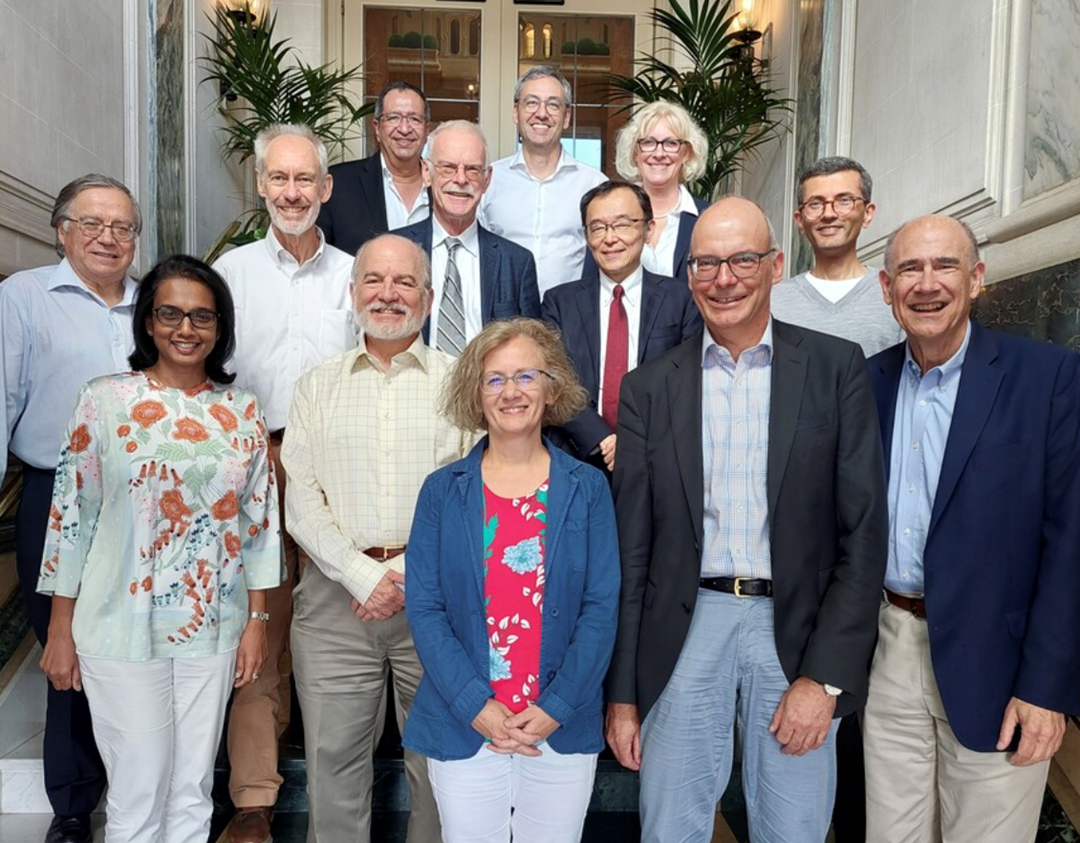
Dear Colleagues,
To paraphrase Lampedusa in his novel, The Leopard, ‘If we want things to stay as they are, they must change.’ Our executive committee is engaged in two important changes in IFCN activity. Firstly, after careful consideration, IFCN ExCo has decided to change the IFCN’s management company and is in the process of moving from AIM in Virginia to Executive Director, Incorporated, (EDI) in Wisconsin. The handover has been happening behind the scenes for a few months now and should be complete by the end of the year. I hope that when you log onto the website you’ll not see any change, at least initially, and that everything else will involve a smooth transition. Please bear with us, however, if there are any unexpected glitches. Our new executive director will be announced soon. For the moment Kay Whalen, Executive Director of EDI, is very kindly looking after us.
I would like to thank all the staff at AIM, especially Carol Freysinger, Catherine Lamoureux and their ED, Debbie O’Keefe, for the professional and helpful way they have handled transition. Carol and Catherine especially have also done a huge amount of work for IFCN over the last couple of years in a wide variety of tasks; supporting committee work and our Masterclasses, assisting website development, as well as their work on the Geneva Congress. Their work has often been behind the scenes but has assisted IFCN business stepping up a gear or two these last years.
The second change to announce is that Professor Ulf Ziemann’s term as Editor-in-Chief, Clinical Neurophysiology, finishes in about a year and so we now need to find a replacement editor. An advert will be placed on our website and in other outlets. The term of Editor-in-Chief is four years, renewable once, and includes a position on the Executive Committee of the IFCN. Starting with this appointment, IFCN will provide an annual sum, to be negotiated with the successful applicant, for office expenses and/or stipend of the appointee and his/her Editorial team. If you are interested in this position, please complete the details which will be posted on our website in the future and send to me please also; jonathan.cole@uhd.nhs.uk. The deadline for applications will be the end of March 2023.
Please allow me to direct you to our Editor’s recommendations of two outstanding papers as below. Note that the Editor’s pick from Clinical Neurophysiology Practice includes herself as one of the authors. A short read of the paper will convince you that Its importance merits such highlighting.
It remains for me to wish you all a happy mid-winter break. Of course, for us in the northern hemisphere this means Christmas and the New Year, and Father Christmas, reindeer and much more. But of course in the southern hemisphere it may be a time for summer holidays, while other countries, with other faiths, will have their own celebrations or none. Perhaps it is, then, a chance to wish you all some time off with family and friends, to recharge and to redress our precious work-life balances. And, rather than a photo of snow and reindeer please find one of your outgoing and incoming ExCo’s taken after the Geneva ICCN in September, with our best wishes for the season and for 2023.
With Warm Regards,
Jonathan Cole
IFCN President
Professor Ulf Ziemann, Editor’s Choice – Clinical Neurophysiology, December 2022
Visani E, Panzica F, Eleopra R, Rossi Sebastiano D, Lanteri P, Devigili G, Dotta S, Rinaldo S, Franceschetti S. MRI-guided focused-ultrasound thalamotomy in essential tremor: Immediate and delayed changes in cortico-muscular coherence and cortico-cortical out-strength. Clinical Neurophysiology 2022;144:67-71
Magnetic-Resonance-guided Focused-Ultrasound (MRgFUS) targeting the ventralis-intermediate nucleus (VIM) in the thalamus has emerged as a promising treatment for medication-refractory ET patients, with immediate clinical effects. This study used MEG and EMG to measure cortico-muscular coherence, (CMC), and cortico-cortical out-strength in the motor cortical network during isometric extension of the right hand to show the underlying neurophysiological mechanisms of this response. The clinical benefits were associated with restoration of CMC to the affected hand which may be sustained by long-term plasticity in cortico-cortical network communication.
Professor Margitta Seeck, Editor’s Choice, Clinical Neurophysiology Practice, December 2022.
Pia De Stefano, Eric Ménétré, Serge Vulliémoz, Pieter Van Mierlo, Margitta Seeck, Changes of interictal epileptiform discharges during medication withdrawal and seizures: A scalp EEG marker of epileptogenicity, Clinical Neurophysiology Practice, Volume 7, 2022, 279-284,
Using semi-automatic spike counting, the authors showed that withdrawal of antiseizure medication (ASM) increased the rate of interictal (focal) epileptiform discharges (IEDs), compared to baseline, and was related to increased likelihood of seizure occurrence. This means that an increase of IEDs in the routine EEG during follow-up is not a benign finding, but may reflect worsening of the epileptic disorder and should initiate a request for drug levels.
